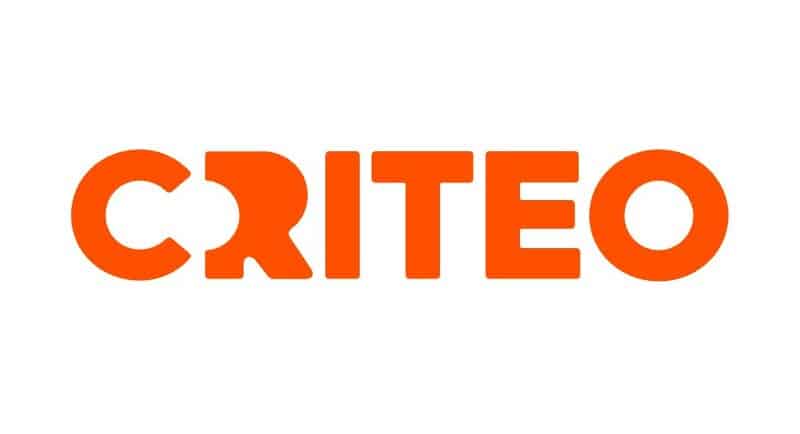Criteo is a global technology company and commerce media platform that helps marketers and media owners reach audiences through dynamic retargeting online display advertisements.
Its commerce media platform connects 22,000 marketers and thousands of media owners to first-party data to bring a fuller and richer experience in the buying journey for consumers while enabling closed-loop measurement or online-to-offline measurement.
The rise in demand for privacy by consumers is a positive change that has led to the transformations in the industry, such as responsible data collection and management. Still, it has raised questions about responsible addressable advertising, which commerce media has evolved as the solution.
According to Criteo, commerce media: “enables both retail and non-retail advertisers (such as food delivery and travel industries) to connect with audiences throughout the buying journey on retailers and publishers across the open internet, leveraging large-scale commerce data to improve experiences and tie ad spend directly to outcomes.”
Commerce media gives marketers and media owners a safe and straightforward way to drive growth through advertising across the open internet while giving consumers relevant ads.
Criteo dubbed commerce media as “the next big thing”. They aim to help retailers, marketers, and media owners understand what it is, the trends behind it, and the state of commerce media through its Ultimate Guide to Commerce Media.
Criteo’s chief product officer Todd Parsons noted at a recent press briefing: “We operate data on behalf of our partners and our brand partners. Our job is to make that data work for commerce media, not just the core business.”
Commerce media ecosystem
Criteo notes three leading players that make up the commerce media ecosystem – marketers, media owners and consumers.
Marketers, brands, retailers, and agencies are on the demand side of the system. They want to activate addressable advertising campaigns that reach consumers from discovery to purchase.
Media owners, publishers, retailers, and marketplaces are on the supply side and want to sell their advertising to marketers.
Rounding out the ecosystem are consumers who buy the products and have control of the reshaping of the industry and commerce media.
Changes fuelling commerce media’s rise
Commerce media is trending for several reasons, according to Criteo. Among them is the demand for privacy by consumers and increased regulation.
As a result, Criteo has suggested retailers and publishers should prioritise gathering and growing first-party data strategies and find new responsible ways of reaching and monetising audiences ahead of the depreciation of third-party cookies in 2024.
Also fuelling its rise is the ongoing eCommerce boom due to the pandemic and consumers’ continued appreciation for visiting physical stores. Criteo also found that consumers have taken up alternative shopping options such as click and collect.
Consumers are also turning to the open internet more than ever – expanding their shopping from Amazon and Google searches. Research by Criteo found that more consumers are starting product searches on retail and brand websites.
As consumers turn to the internet, brands are following their consumers online, which has seen the trade marketing shift to digital. According to the research by Criteo, 92% of and 76% of US brand advertisers say their growth depends on retail media advertising.
In addition, is the emergence of the head of commerce role in agencies. Those in the position lead a wide-ranging approach to commerce to break down silos and take on an audience-based approach.

Todd Parsons, Criteo’s chief product officer
Criteo’s recent insights into Australian sales events
Recent insights by Criteo found sales events are incredibly popular with consumers and retailers in Australia.
The growing pool of events includes Click Frenzy, Black Friday, Cyber Monday, and Boxing Day sales.
Australian shoppers also take more time in the decision stage of making a purchase.
According to Criteo’s data, in the top quartile, it takes 45 minutes for an Australian consumer to decide compared to shoppers in the US and UK at 30 minutes. On average, it takes 19 days for Australian and US shoppers to consider a product, unlike in the UK, which is 16 days.
Criteo’s insights also found that Black Friday is the leading sales event in the latter part of the year, over Boxing Day sales, which originated in Australia. Black Friday was the most significant sales event across all categories in 2021.
State of commerce media
Criteo noted that the current state of commerce media on the open internet is mainly fragmented, with its different side platforms operating separately.
A recent study for the company found that more than 40% of marketers use between six to 10 different media buying platforms.
It found marketers are also looking for commerce media partners to provide capabilities such as improved performance, agility, ability to compare and optimise, measure performance, adjust in real-time and access to a large pool of first-party data.
Commerce media platforms are adapting and advancing to make it easier for marketers and media owners to work together to connect them in an open marketplace on a single interface.
Parsons said: “Companies who enable publishers and advertisers to safeguard consumer rights while connecting first-party data on both the buy and sell side are going to define the next chapter of personalised advertising.”
Future-proofing with commerce media
Criteo’s guide notes that commerce media should now be a top priority for marketers as the industry faces challenges such as privacy regulation, cookie depreciation and accountability.
Commerce media solves fragmentation by allowing marketers and media owners to use less tech and focus on growth. It also respects consumers’ data rights with responsible and relevant advertising because of its audience-first approach.
Criteo CEO Megan Clarken concluded: “In the future, I’d like to be able to say that the open internet is alive and kicking and vibrant. And that consumers love it because of Criteo’s contribution to it.
“Where new businesses can come and thrive and where innovation can be at the centre, and where advertising can pay for more and more experiences to come to the open internet. A truly vibrant environment for all – that’s our promise.”
